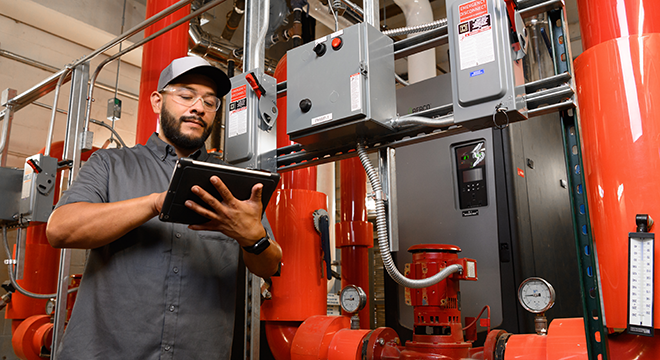Benefit the Planet and Save Money with AI-Enabled HVAC Analytics

As businesses and buildings move toward sustainability, the intersection of technology and environmental consciousness has increased the pace of performance of AI-enabled HVAC analytics tools. The marriage of artificial intelligence (AI) with heating, ventilation and air conditioning (HVAC) systems is revolutionizing how buildings are managed, creating an efficiency where sustainability is also generating significant financial returns.
HVAC systems are the backbone of indoor climate control in residential, commercial and industrial buildings. Traditionally, these systems have operated on fixed schedules or basic setpoints, often resulting in energy inefficiencies, increased carbon emissions, and escalating operational costs. However, the emergence of AI-driven analytics tools is transforming HVAC management into a proactive and dynamic process, yielding substantial benefits on multiple fronts.
Optimizing Energy Use
One of the most significant advantages of AI-enabled HVAC analytics is its capacity to optimize energy consumption. These advanced tools use machine learning algorithms to analyze vast amounts of data from HVAC systems, weather forecasts, building occupancy patterns and energy prices in real-time. By discerning intricate patterns and correlations, AI algorithms can dynamically adjust HVAC settings to match actual demand, minimizing energy waste, improving sustainable operation, decreasing utility and operational costs, all without compromising comfort levels.
Beyond environmental benefits, the adoption of AI-enabled HVAC analytics also delivers compelling financial returns. Energy constitutes a substantial portion of a building's operating expenses, and inefficient HVAC systems can significantly inflate these costs. By leveraging AI-driven insights to optimize energy usage, building owners and operators can achieve substantial savings on utility bills. Moreover, the proactive maintenance facilitated by these tools reduces the likelihood of costly HVAC failures, further bolstering financial resilience. AI-enabled HVAC analytics have recently become more accessible for organizations of all sizes, supporting building sustainability across government, commercial and industrial industries.
Supporting Compliance
Furthermore, AI-driven HVAC analytics contribute to regulatory compliance and risk mitigation. Governments worldwide are enacting stringent energy efficiency regulations, mandating building owners to adhere to specific standards or face penalties. By proactively optimizing energy usage through AI technology, buildings can ensure compliance with regulatory requirements while mitigating the risk of fines or sanctions. This proactive approach not only safeguards against financial liabilities but also positions buildings as responsible corporate citizens committed to sustainability.
Holistic Energy Management
The transformative impact of AI-enabled HVAC analytics is not confined to individual buildings; it extends to broader energy ecosystems. By aggregating data from multiple buildings, AI algorithms can identify macro-level energy consumption patterns, optimize grid performance and inform energy policy decisions. This holistic approach to energy management fosters a more resilient and sustainable energy infrastructure, benefiting communities and societies at large.
However, the realization of these dual benefits hinges on widespread adoption and integration of AI-driven HVAC analytics into mainstream building management practices. While the technology holds immense potential, barriers such as technical complexity and organizational inertia pose significant challenges. Building owners and operators must invest in education, training and infrastructure to capitalize on the advantages offered by AI-enabled HVAC analytics fully.
In conclusion, the emergence of AI-enabled HVAC analytics heralds a new era of environmental stewardship and financial prudence in building management. By harnessing the power of artificial intelligence to optimize energy consumption, buildings can reduce their carbon footprint, lower operating costs and enhance building operation. The dual benefits of sustainability and financial returns underscore the transformative potential of AI-driven innovation in shaping a more efficient and resilient built environment.
Learn more about BrightBlue®, TDIndustries’ smart buildings solution.
More from the Blog
Then and Now: Optimize Your Fault Detection and Diagnostics Results
Fault detection is a crucial component to a facility’s building automation system (BAS) or building...
George R. Brown Convention Center Scores LEED Gold with TD Support
How often does a 35-year-old building achieve LEED Gold certification? You tell us, but we’d say given...
There's No Substitute for Skilled, Safe Electrical Service
Commercial electrical work arguably poses a significant workplace safety hazard, especially if...
Subscribe to our blog
Please provide your email address to subscribe!
